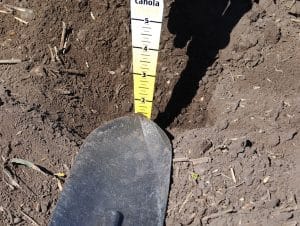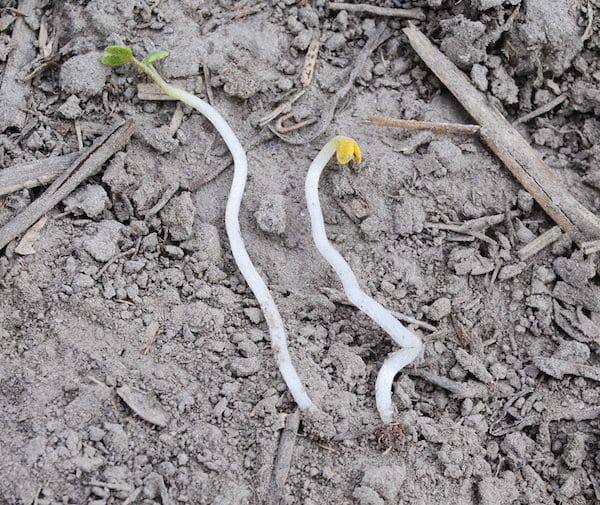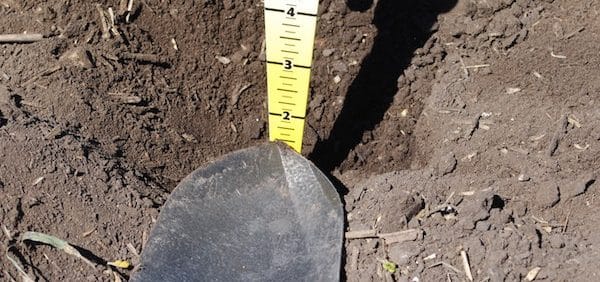Seeding too deep is a common stand establishment issue in canola. This becomes clear as plants emerge, especially when some rows emerge earlier and more vigorously than others.
Recently emerged plants provide an easy way to assess the drill for seed depth accuracy. To find out what percentage of plants were seeded at the target depth, simply dig up plants from a few different rows and measure the white part of the stem. (Note: If any part of the stem above-ground has remained white, you can measure this before pulling it out.)


If some rows or sections are worse than others, check the drill to see what might be the cause and how that can be fixed for next year.
Here are some clues, provided in a RTL article called “Did your seeder do the job you expected?”
Are all the rows emerging at the same time? If not, this is the first indication that there were some incorrect adjustments on the seeder. This observation is best made just as the final plants are emerging. In another week if the plants in the adjacent rows have grown to close to the same stage, the slight variation won’t be a problem. But fine tuning the seeder will ensure uniform maturity.
Front rows late: Caused by soil stacking as a result of the adjacent openers throwing soil into the front furrows increasing the depth of soil. The front of the seeder could be set too deep.
Rear rows late: The opener wasn’t deep enough to produce sufficient soil cover over the seed leaving the seed in dry soil or even uncovered.
Occasional rows late: The shank and opener that planted that row is not adjusted properly and is penetrating too deep. May also be an opener following in a wheel track and not penetrating to moisture, or the soil is working up too lumpy to pack properly.
Plants are missing within a row:
—Long gaps (6 inches or more) are likely the result of seed being retarded in the seed delivery line or in the seed delivery boot.
—Small gaps often result from insufficient packing due to lumps in the seed bed. It is often difficult to prevent this in clay soils. Unless rain occurs soon after seeding, these missing plants will not likely show up later to interfere with the harvesting. Yields may not be affected by small gaps in the seed row.
—Irregular gaps are most likely the result of poor seed to soil contact and can result from seeding too shallow. These missing plants may show up later after a significant rainfall.
Plants missing under lumps of soil and residue: Residue conditions often cause straw and eventually soil to drag with the opener. At some point the pile of material rolls off and either falls back on the seed row or onto the adjacent row. Sometimes plants will emerge through the pile but will be later in maturity.
Further reading:
